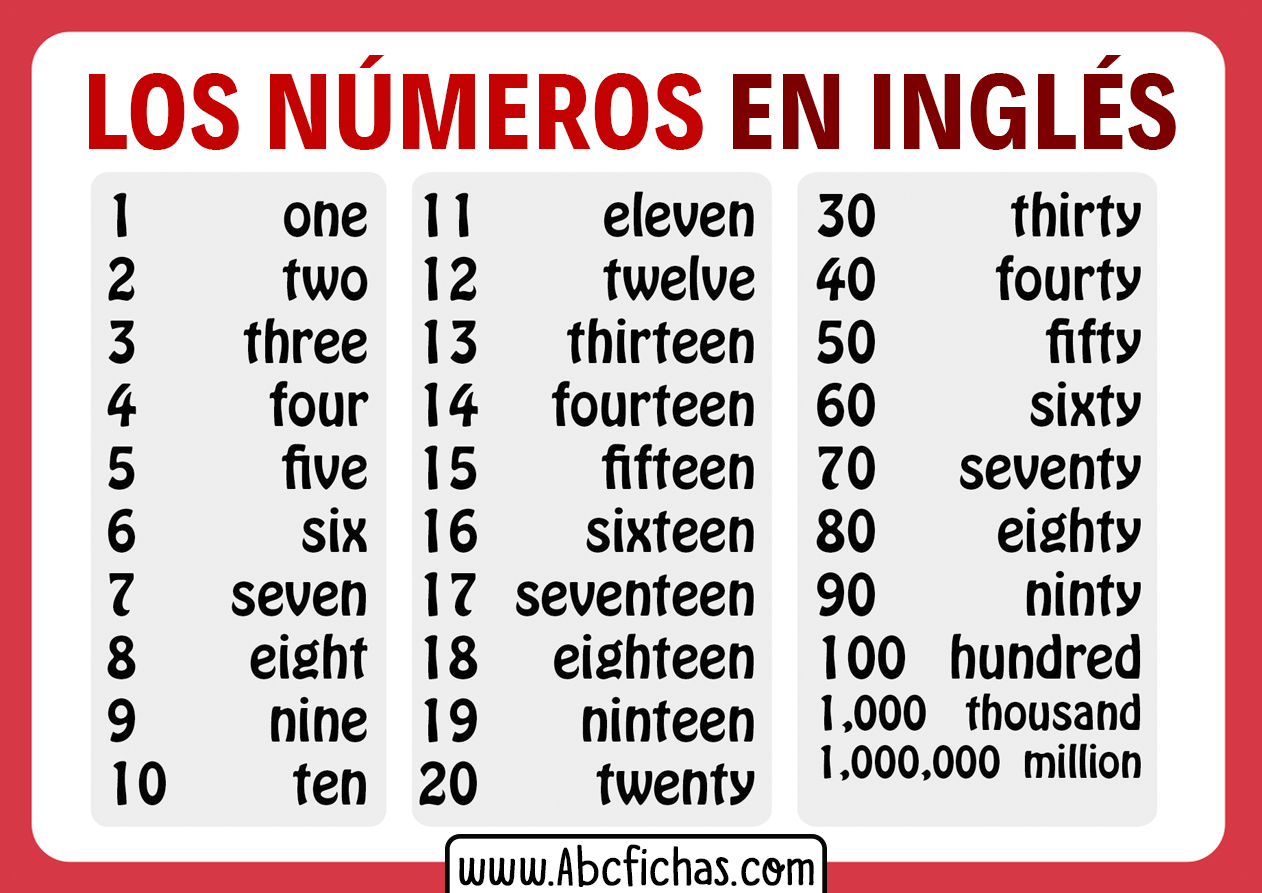Numeros 1 Al 100 En Ingles Para Niños es un recurso invaluable para ayudar a los niños a desarrollar habilidades lingüísticas y matemáticas. Aprender los números en inglés desde temprana edad abre un mundo de oportunidades, mejorando la comprensión del idioma, fomentando el pensamiento lógico y preparando a los niños para el éxito académico.
Este artículo ofrece una guía completa para enseñar los números del 1 al 100 en inglés a los niños. Se explorarán diferentes estrategias para presentar los números, desde la pronunciación hasta la formación de números más grandes. También se incluirán actividades divertidas y recursos adicionales para que los niños puedan practicar y consolidar su aprendizaje.
Learning Numbers 1 to 100 in English for Kids: Numeros 1 Al 100 En Ingles Para Niños

Learning numbers in English is a fundamental skill for children, opening doors to a world of knowledge and opportunities. It lays a strong foundation for future academic success, enhances communication skills, and fosters a deeper understanding of the world around them.
Introducing numbers at an early age has numerous benefits. It helps children develop their cognitive abilities, including counting, problem-solving, and logical thinking. Learning numbers in English also prepares them for interacting with English-speaking environments, such as books, movies, and online resources.
Numbers 1 to 10

Let’s start with the basics! Here are the numbers 1 to 10 in English, along with their pronunciation:
| English | Spanish |
|---|---|
| One /wʌn/ | Uno |
| Two /tuː/ | Dos |
| Three /θriː/ | Tres |
| Four /fɔːr/ | Cuatro |
| Five /faɪv/ | Cinco |
| Six /sɪks/ | Seis |
| Seven /ˈsɛvən/ | Siete |
| Eight /eɪt/ | Ocho |
| Nine /naɪn/ | Nueve |
| Ten /ten/ | Diez |
Here are some examples of how to use these numbers in simple sentences:
- I have one apple.
- There are two birds in the tree.
- Can you count to three?
Numbers 11 to 20
The numbers 11 to 20 in English follow a slightly different pattern. They combine the numbers 1 to 9 with “teen” at the end. For example, “eleven” is “one” + “teen” and “twelve” is “two” + “teen”.
| English | Spanish |
|---|---|
| Eleven /ɪˈlɛvən/ | Once |
| Twelve /twɛlv/ | Doce |
| Thirteen /ˌθɜːrˈtiːn/ | Trece |
| Fourteen /ˌfɔːrˈtiːn/ | Catorce |
| Fifteen /ˌfɪfˈtiːn/ | Quince |
| Sixteen /ˌsɪksˈtiːn/ | Dieciséis |
| Seventeen /ˌsɛvənˈtiːn/ | Diecisiete |
| Eighteen /ˌeɪˈtiːn/ | Dieciocho |
| Nineteen /ˌnaɪnˈtiːn/ | Diecinueve |
| Twenty /ˈtwɛnti/ | Veinte |
Here are some examples of how to use these numbers in simple sentences:
- I have eleven crayons.
- There are twelve cookies on the plate.
- Can you count to fifteen?
Numbers 21 to 100
The numbers 21 to 100 are formed by combining the numbers 2 to 9 with the tens numbers (“twenty”, “thirty”, “forty”, etc.). For example, “twenty-one” is “twenty” + “one” and “forty-five” is “forty” + “five”.
| English | Spanish |
|---|---|
| Twenty-one /ˈtwɛnti wʌn/ | Veintiuno |
| Twenty-two /ˈtwɛnti tuː/ | Veintidos |
| Thirty /ˈθɜːrti/ | Treinta |
| Forty /ˈfɔːrti/ | Cuarenta |
| Fifty /ˈfɪfti/ | Cincuenta |
| Sixty /ˈsɪksti/ | Sesenta |
| Seventy /ˈsɛvənti/ | Setenta |
| Eighty /ˈeɪti/ | Ochenta |
| Ninety /ˈnaɪnti/ | Noventa |
| One hundred /wʌn ˈhʌndrəd/ | Cien |
Here are some examples of how to use these numbers in simple sentences:
- There are twenty-one students in the classroom.
- I have thirty-five toys.
- Can you count to fifty?
Activities to Learn Numbers
Learning numbers can be fun and engaging! Here are some activities to help children practice:
- Number Games:Play games like “Number Bingo” or “Guess the Number” to make learning interactive.
- Counting Objects:Encourage children to count everyday objects, such as toys, fruits, or fingers.
- Number Songs:Sing catchy number songs to help children memorize the numbers and their pronunciation.
- Number Puzzles:Use number puzzles or flashcards to reinforce number recognition and sequence.
- Number Stories:Create stories that involve numbers and encourage children to retell them, using the numbers they have learned.
Dominar los números en inglés es fundamental para el desarrollo integral de los niños. Aprender los números del 1 al 100 no solo les proporciona una base sólida para el aprendizaje del idioma, sino que también les permite comprender conceptos matemáticos básicos.
Con este conocimiento, los niños estarán mejor preparados para enfrentar los desafíos académicos y las oportunidades que se les presenten en el futuro.
